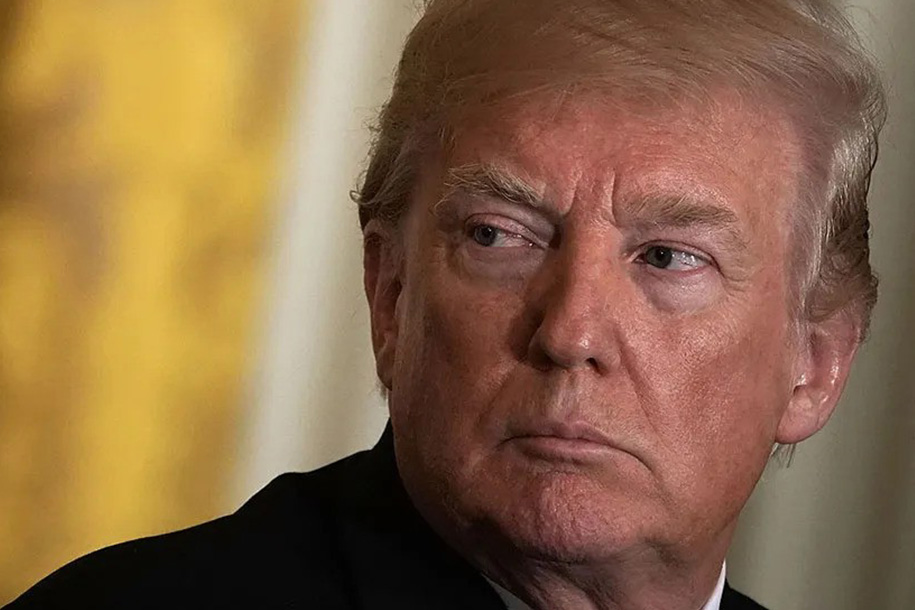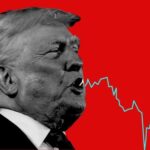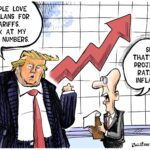The Trade War and Its Risks: Trump Tariffs Recession
The trade war is here, according to a leading credit rating agency. It now resembles a street fight that risks a recession, which Donald Trump could mismanage Trump tariffs recession and potentially even a depression.
Tariff Escalation: Trump’s Latest Moves
Trump’s new tariffs on $200 million of Chinese goods took effect this week. China retaliated with $60 billion on US imports, and Donald Trump threatened to punch back with tariffs on Chinese goods worth four times as much. China called Trump a bully and released a white paper accusing him of breaking 40 years of norms and threatening global economic stability.
The exchange follows Trump’s threat of $267 billion tariffs and warning that he’s prepared to tax all Chinese imports, after which China threatened to increase U.S. imports subject to tariffs to $110 billion—or 85 percent of all imports from the U.S. {mosads}
Potential for a Second Depression: Trump Tariffs Recession Scenario
Could all this lead to a second depression? It’s not so far-fetched. It took both Presidents George W. Bush and Barack Obama’s intervention to prevent the Great Recession from leading to another depression. Trump would be incapable of responding to a similar crisis.
Comparison with Past Crises: Trump Tariffs Recession Risks
In 2008, Secretary of Treasury Henry Paulson, who led the rescue team, had visions of breadlines. But Bush avoided a total meltdown by convincing an unwilling Congress to pass a $700 billion bank bailout, even in the face of public outrage against Main Street bailing out Wall Street.
Paulson describes Bush as a calm leader. Trump is neither calm nor rational. His steel and aluminum Trump tariffs reportedly were launched out anger at Chief of Staff John Kelley’s downgrade of Jared Kushner’s security clearance, Attorney General Jeff Sessions’s handling of an investigation of a Trump campaign associate, the absence of consensus from his staff on tariffs, and Hope Hicks’ testimony before Congress regarding Russian meddling.
Trade Agreements and Economic Consequences: Trump Tariffs Recession Impact
Unlike Bush, Trump feeds and exploits public outrage over choosing what’s best for America. For example, he whipped up his base by calling the Trans Pacific Trade Partnership “a rape of our country,” and then abandoned it. We lost trade agreements with nations representing a third of global GDP, and forewent tariff reductions on manufactured, agricultural and technology products and higher labor standards for TPP participants. China quickly filled the vacuum with trade pacts with16 countries that excluded the US. Now Trump wants back in, but it’s too late.
Bush heeded the advice of highly qualified and reputable advisers, including Paulson, Ben Bernanke and Timothy Geithner. Trump, on the other hand, ignored warnings against tariffs from many economists and bipartisan Congressional groups. Instead, he hired fringe economist Peter Navarro and Wilbur Ross as Secretary of Commerce because they were among the very few who agreed with his aggressive – some say reckless – trade tactics.
China’s Retaliation and Economic Impact: Trump Tariffs Recession Concerns
China is “out of bullets” to retaliate with tariffs, says Commerce Secretary Ross, because its exports to the U.S. are four times larger than the U.S. exports to China. What’s China’s next punch? It could block supply chains to industries that make “Made in America” brands, which would exacerbate the disruptions and economic slowdown already resulting from tariffs.
Products such as autos are highly integrated with Chinese supply chains and dependent on their cheaper components. The impact on those industries and their prices would be immeasurable. White House economists worry that such disruptions could weaken America’s ability to mobilize in conflicts, as we did in World War II.
Trump’s Stance and Economic Risks: Trump Tariffs Recession and Beyond
Trump is unlikely to soften his approach and risk the appearance of a personal loss. He’s more likely to become more belligerent and ignore, or be blind to, the risk of a depression.
Comparative Analysis: 1930s and Today’s Economic Landscape
Clearly, we’re better equipped now than in the 1930s to avoid a depression. In the 2008 recession, we lowered interest rates, back-stopped failing banks and money market funds, increased the money supply and bank capital, bailed out auto companies, gave tax rebates, stemmed mortgage foreclosures and purchased distressed mortgage-related assets. Economists suggest these moves avoided another depression.
Today, deposit insurance prevents runs on banks. The stock market hasn’t crashed. Nor is there the deflation that stifled investment and spending in the 1930s.
Debt and Economic Flexibility: Trump Tariffs Recession Challenges
But the US was a large creditor nation then with the flexibility to borrow and provide liquidity and stimulus. Today, the US debt to GDP ratio is 78 percent and expected to rise to 96 percent by 2020, which would severely limit the flexibility to engineer a recovery. The massive spending and employment of 12 million Americans that attended WWII, which helped end the Great Depression, won’t help today. And if interest rates stay low, the Fed won’t be able to lower them enough to stimulate growth.
Historical Parallels and Future Uncertainty: Trump Tariffs Recession Impact
There are also similarities between the 1930s and today. Extensive tariffs, which economists believe deepened the Depression, are common to both. There’s no telling whether Trump will double, triple or even quadruple down on tariffs and how countries might retaliate. President Hoover, like Trump, ignored many economists who warned against tariffs.
In 2008, at the start of the Great Recession, The Economist cited free trade as a reason why another depression is remote. It noted that government commitment to free trade and “the patterns of cross-border commerce, with … production spread over so many countries, would be enormously costly to pull apart.” But Donald Trump’s trade tactics risk dismantling the international order that has been a reliable barrier against another depression.







